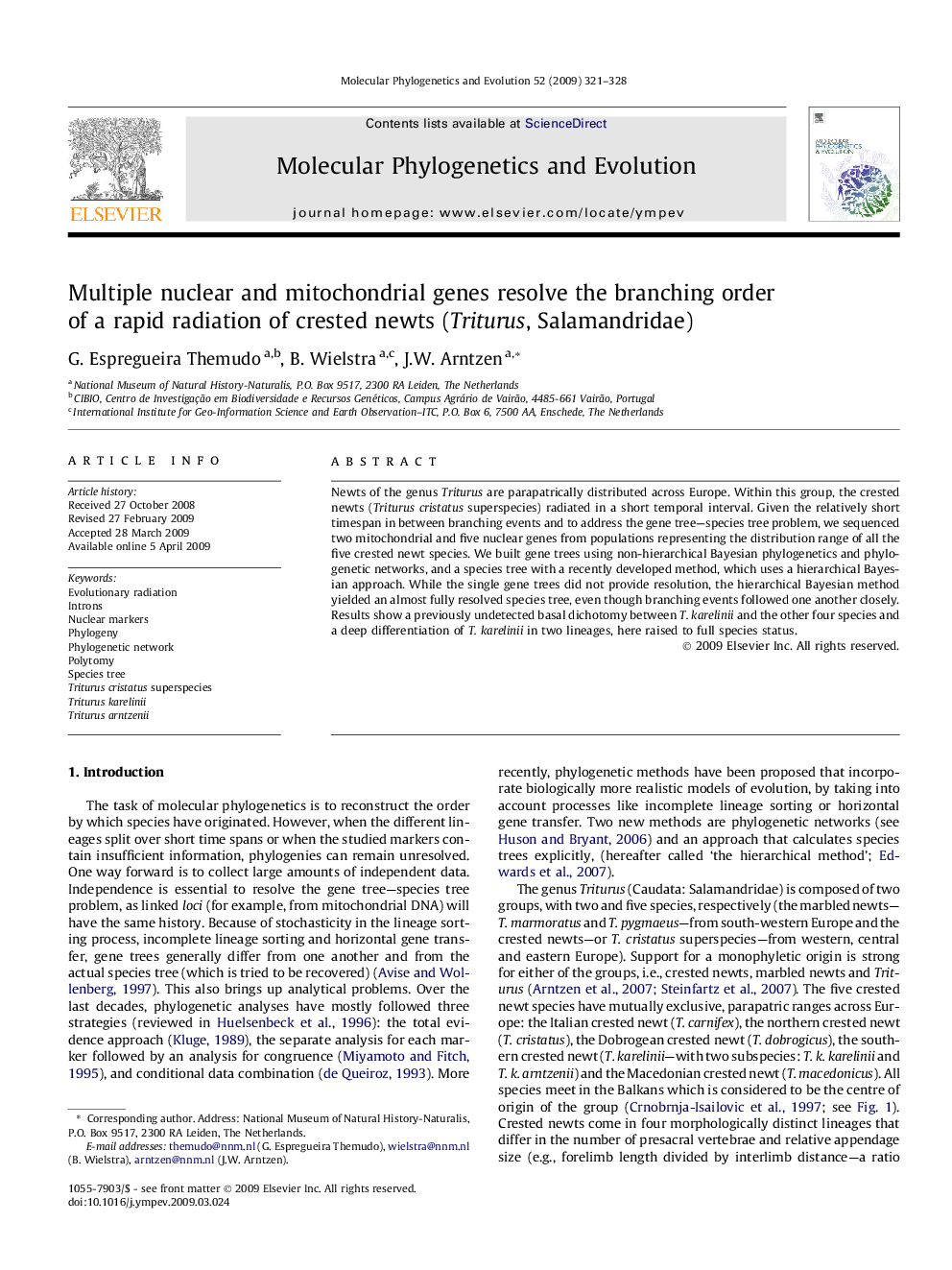| Article ID | Journal | Published Year | Pages | File Type |
|---|---|---|---|---|
| 2834392 | Molecular Phylogenetics and Evolution | 2009 | 8 Pages |
Newts of the genus Triturus are parapatrically distributed across Europe. Within this group, the crested newts (Triturus cristatus superspecies) radiated in a short temporal interval. Given the relatively short timespan in between branching events and to address the gene tree—species tree problem, we sequenced two mitochondrial and five nuclear genes from populations representing the distribution range of all the five crested newt species. We built gene trees using non-hierarchical Bayesian phylogenetics and phylogenetic networks, and a species tree with a recently developed method, which uses a hierarchical Bayesian approach. While the single gene trees did not provide resolution, the hierarchical Bayesian method yielded an almost fully resolved species tree, even though branching events followed one another closely. Results show a previously undetected basal dichotomy between T. karelinii and the other four species and a deep differentiation of T. karelinii in two lineages, here raised to full species status.
